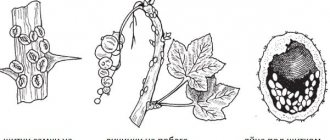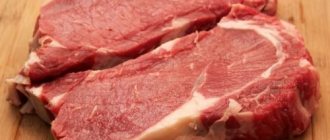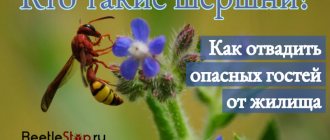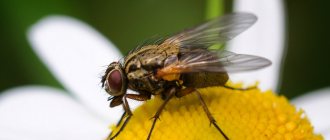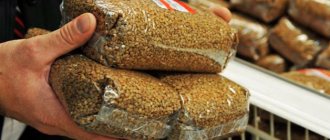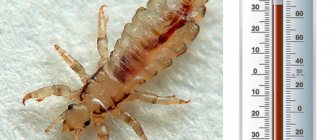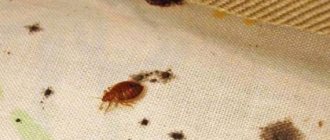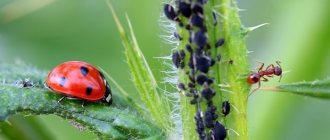Gooseberries and currants – popular crops in gardening. They do not require careful care, watering and fertilizing, but they bring a rich harvest. Plant diseases and pests can rob a gardener of his juicy berries. After all, gooseberries and currants themselves are helpless against them. For example, the gooseberry moth, which inhabits almost the entire territory of Russia, causes significant damage to berry crops. The larvae of this butterfly can eat up to 15 berries at a time. Therefore, experts advise fighting this pest and following the rules of prevention so that it does not disturb berry crops again.
Characteristics of the fire
The gooseberry moth is a subspecies of the scalywing moth, which belongs to the butterfly family. It is small in size and dark brown in color. The bug lays its eggs in the buds and ovaries of gooseberries, raspberries and currants. Just one individual moth is capable of producing 100-150 eggs.
After ten days, caterpillars hatch from the eggs. In a berry that is already ripe by that time, one caterpillar attaches itself, and its sisters and brothers crawl into neighboring buds in search of food. Moth caterpillars eat only the contents of fruits and their seeds, leaving biological waste inside. Of course, this causes the berries to deteriorate and rot.
When the caterpillar eats one berry, it crawls into another. About a month after their birth, the caterpillars descend along the web into the ground to pupate there, overwinter and fly out of the ground in the spring to reproduce. Typically, moth pupae overwinter at a depth of up to 7 centimeters in the soil next to bushes.
Adult moths fly for about a month. At the end of this period, the berry crops are just blooming, which is attacked by insects.
Signs of fire damage
Moth caterpillars infect the leaves of the plant, causing curling, changes in structure and wilting. The appearance of thin cobwebs, excrement and skins of caterpillars is observed. Upon careful inspection, hairy green caterpillars can be found in the foliage, and the ground around the plant is strewn with the remains of leaves and insect waste products. Losing its leaves, the plant quickly dries out and dies. Damaged currant berries turn brown early, and their tops begin to rot, after which the fruits fall off. If you do not fight the insects, you can lose almost the entire crop.
What measures exist to combat the moth. What are the rules of prevention?
There are many different ways to directly combat the moth. If they are consumed in time, the insect will not have time to destroy the crop. Each method is used depending on the period and stage of development of berry crops:
- Agrotechnical - from the beginning of spring until the very end of autumn.
- Treatment with poison - from the beginning of spring until the beginning of flowering, at the end of summer and in the fall, when the harvest is harvested.
- Spraying with biological agents - throughout the entire growth and development of bushes.
- Folk methods - throughout the entire period of development.
Agrotechnical methods against moth
Obviously, weakened bushes will suffer more from pests than stronger ones. Therefore, it is necessary to follow the usual agrotechnical rules so that gooseberries and currants develop normally and grow well:
- thin out bushes as necessary;
- do not fertilize excessively;
- clean the roots of the bush from fallen leaves;
- cut off shoots;
- treat against pests and diseases;
- dig up soil within the radius of the trunk;
- Hill up and cover the soil next to the bush for the winter.
Digging the soil
Adult moth caterpillars directly descend to the soil surface to burrow into it and modify into a pupa. If at the end of autumn you dig up the first layer of soil within a radius of up to 50 centimeters from the bush, the pupae that fall out of the ground in winter will simply freeze and die.
It should be remembered that the roots of currants and gooseberries are not deep, so you need to dig up the soil carefully and no deeper than 5 centimeters.
Hilling
Usually the pupae spend the winter closer to the center of the bush. To prevent insects from attacking gooseberries or currants in the summer season, they need to be directly earthed up in the autumn. As a rule, this procedure is carried out in late September - early October. In the root circle, the soil is loosened and a mound is poured into the base of the bush, the height of which should be approximately 10 centimeters. When the butterfly hatches from the cocoon in the spring, it will be difficult for it to crawl through the layer of soil and it will not be able to lay eggs.
Ground cover
Covering the soil with dense material is called mulching. First, a peat or compost layer is laid out near the base of the bush within a radius of 30-40 centimeters and a thickness of 10 centimeters. This is done as soon as the snow melts so that the butterflies cannot leave their hibernation site. The poured layer is removed when the berries are completely ripe.
Also in early spring you can cover the soil next to the bush with dense roofing felt. For butterflies, it will become a wall through which they are unlikely to crawl.
Mechanical collection of affected berries
If there are few affected berries on the bush, you can use mechanical picking. All berries that will be collected must be poured with boiling water and disposed of. This will help protect the rest of the crop from moths at the very beginning of infection of the bushes.
Thinning bushes
A heavily thickened bush directly creates favorable conditions for the life of moths. If you trim the bush in time, this will improve air circulation and light in it. In addition, if you thin out the bushes every year, larger fruits will grow on them.
Moth traps
Everyone knows that all butterflies fly towards the light. Fireweeds are no exception here. You can buy a light “trap” in a specialized store, or you can make it yourself. To do this, take an ordinary light bulb, connect it to electricity and turn it on at night. Next, the light bulb is covered with a glass cap, which is pre-coated with something sweet and sticky. The fireflies fly towards the light and sweet smell, land on the cap and fall into the trap.
Currant leaf gall midge
Currant leaf gall midge is widespread in central Russia everywhere. Damages young, unexpanded leaves, causing the growth of newly formed lateral buds. There is a general weakening of the bushes. Heavy pruning promotes the proliferation of gall midges, as this produces many basal shoots. Young plantings are damaged the most. In fruit-bearing plantings, varieties with a longer growing season and the formation of young upper leaves, which are chosen by gall midges for oviposition and larval development, are more damaged.
Female leaf gall midges are brownish-yellow with a dark gray head, brown chest and orange abdomen, covered with dark gray hairs. The body length of the female without ovipositor is 1.5-2 mm, of the male - 1~1.5 mm. The wings have three veins. The legs are long, 2-2.5 times longer than the body. The eggs are spindle-shaped and transparent. Soon after hatching, the larva is transparent glassy, subsequently milky white, and shortly before pupation it acquires a yellowish tint. The length of the adult larva is 2-2.5 mm.
The larvae overwinter in the top layer of soil (1-3 cm) in cobwebby white cocoons (1.5-2 mm) under blackcurrant bushes. Adult mosquitoes fly out during the budding period of black currants, in early May. Females lay eggs mainly between the folds of unopened leaves. The laying period (two to three weeks) coincides with the budding and flowering of black currants. Adult gall midges live for two to three days.
The fertility of females is 33-97 eggs. The larvae hatch in 3-5 days, and after 7-14 days they go into the soil to cocoon. In the Non-Chernozem zone of the European part of the USSR, the currant leaf gall midge produces four generations. The 2nd and 3rd generations are the most numerous, damaging during the period of currant flowering and the formation of its ovaries.
The beneficial activity and activity of insects parasitizing on gall midges increases by the beginning of summer and continues until autumn.
Measures to combat currant leaf gall midge
To establish plantations, you should use healthy planting material grown in special nurseries. A good agricultural practice that reduces the number of pests is to mulch the soil with peat crumbs in a layer of 6 cm. Damaged shoots with gall midge larvae should be cut out, the soil in the plantings should be systematically cultivated, carefully processed in late autumn and early spring, since this disrupts the conditions for cocooning of larvae and the emergence of adult insects . It is recommended to sow nectar-bearing plants in the areas.
On plantations heavily infested with leaf gall midge, chemical treatment (during the period when the buds are exposed) with karbofos (10% k.e. or 10% s.p.) is necessary - 75 g per 10 liters of water. If the pest population is large, 7-10 days after the first sprayer treatment, a second one is carried out (before the currants begin to bloom).
Traditional methods
Gardeners have already accumulated a wealth of experience in the prevention and control of gooseberry moths. Basically, all products have an unpleasant odor for insects and repel them, and some reduce their activity and irritate the upper layer of the skin of larvae and moths.
Tar and turpentine
Turpentine and tar are good at repelling insect pests. To protect the bushes from moths, you need to pour these liquids into different jars and place them next to the bushes.
Chamomile
From the beginning of flowering, you can treat all currant and gooseberry bushes with an infusion of chamomile. To prepare it, you will need to pour 100 grams of dry chamomile into a bucket of hot water and infuse the resulting solution. Next, it is filtered, poured into a sprayer and sprayed on the bushes in the early morning and late evening.
Persian chamomile
Persian chamomile or feverfew powder has the properties of tansy. It directly contains a strong toxin that negatively affects the nervous system of insects. This powder is used to pollinate bushes to kill caterpillars and moths.
You can also plant tansy itself near berry bushes. 1 tansy flower is enough for 5 gooseberry bushes. The insect does not like its smell and reduces its activity.
Ash
An alkaline solution is prepared from the ash to treat the bushes. To do this, you need to pour ⅓ of the ash into a bucket and fill it with water to the top. Next, the composition is infused for 48 hours and filtered.
Mustard
Mustard contains essential oils and alkaloids that help cope with moth. To spray the bushes, prepare a solution from mustard powder: 10 tablespoons of dry mustard are poured into a bucket of running water and left for 2 days. Next, you can add a little liquid soap so that the composition sticks to the leaves better. The resulting mass is diluted with water in a proportion of ½ and the bushes are treated with it.
Sagebrush
The bitter smell of wormwood always repels moths. An infusion is prepared from it for treating bushes: 7 tablespoons of wormwood are poured into 1 liter of water, allowed to brew for 60 minutes, and then filtered and diluted with 10 liters of water.
You can also stick a dried wormwood branch into the middle of the bush. This will also repel insects.
Tobacco
Tobacco contains nicotine, which kills moths. Bushes are treated with its infusion 7 days after flowering. To prepare the solution, pour 200 g of tobacco into a container, add 3 liters of hot water, close tightly and leave for 48 hours. Before the procedure, liquid or solid soap (grated) is added to the composition.
Vinegar
Vapors from vinegar essence irritate the respiratory tract of caterpillars and butterflies, and also irritate their delicate skin. Therefore, after treatment, insects die immediately.
To prepare a working solution, 250 milliliters of 9% vinegar are diluted in 10 liters of water. The resulting product is sprayed onto the bushes immediately after flowering.
Pesticide
Chemicals help eliminate the moth quickly. Unfortunately, they directly harm not only the insect, but also the berry crop itself, as well as the animals living nearby. It is advisable to use pesticides when neither traditional nor agricultural methods help.
Typically, insecticide treatment is carried out early in the morning or late in the evening. There should be no rain, hail or wind.
One and a half to two liters of poison solution is usually enough for a whole bush. And if biological products are used in processing, then they need from two to five liters per bush.
First, the bushes are sprayed with pesticides. Their effect lasts for 1-2 weeks. Next, the treatment is completed with biological preparations. This is repeated until all caterpillars and butterflies are directly destroyed.
Before flowering begins
Before the flowers appear, the bushes are treated with the following preparations:
- “Fofanon” (3 ml per bucket of water),
- “Inta-Ts-M” (1 tablet per 10 liters of water),
- “Actellik” (2 ml per 2 liters of water).
The active ingredients of the drugs have a detrimental effect on the digestive, respiratory and nervous systems of moths and paralyze them. Insects die from poison very quickly - from 2 to 24 hours. In this case, not only the larvae are destroyed, but also the moth eggs and their adults.
During flowering
As soon as the buds on the bushes begin to open, the plants must be treated with the following means:
- “Bitoxibacillin” (100 grams per bucket of water),
- “Fitoverm” (1.5 milliliters per liter of water),
- “Lepidocide” (30 grams per 10 liters of water).
All these drugs enter the caterpillar's intestines and have a detrimental effect on it. Soon (after about 48 hours) the insect dies.
During the ripening period of berries
During the ripening of berries, currant and gooseberry bushes can be sprayed with the same preparations that are used for treatment during flowering (“Fitoverm”, “Bitoxibacillin”, “Lepidocid”).
The treatment procedure is carried out approximately once a week. However, it is important to remember that processing is stopped 5 days before picking the berries.
It is also important to know that the above products have a very unpleasant odor, which can smell like berries. After collection, they are thoroughly washed up to 3 times.
Gallica
Gall midges are a type of small flying insects similar to mosquitoes. The affected area where the gall midge has settled on currants can be any part of the plant. Adults are 2 mm long and have a yellow-brown color. Initially white, as they develop the color of the caterpillars changes to red-orange, and at the last stage of growth it turns into red.
Note. Black currant varieties are most susceptible to damage by gall midges.
There are three varieties of gall midge:
- Leafy ones that damage young leaves by eating and settling on them. A leaf damaged by leaf gall midges does not develop, curls and falls off. Young shrubby shoots are most susceptible to leaf gall midge invasions;
- Flower gall midges lay eggs in the ovaries of flowers, which leads to the death of the inflorescences, which acquire a spherical shape. Saturated larvae move from the bud to the soil;
- Stem gall midges select cracked fragments of the trunk of currant bushes for ovipositor. This happens at the end of the flowering stage. For nesting, the larvae choose a place under the bark, where huge colonies are formed. Fragments of bark inhabited by stem gall midges, as well as shoots, die.
Important! Large-scale damage by stem gall midges will lead to the loss of more than 70% of garden plantings, not only currants, but also gooseberries. While in the larval stage, each of the above representatives of the gall midge species overwinters in the upper layer of soil
Pupation of caterpillars begins with the onset of stable warming. With the transition of the bush to the flowering stage, mature individuals are activated
While in the larval stage, each of the above representatives of the gall midge species overwinters in the upper layer of soil. Pupation of caterpillars begins with the onset of stable warming. With the transition of the bush to the flowering stage, mature individuals are activated.
Weevil
The bud weevil is a beetle with a gray color and belongs to the short-proboscis type. Representatives of these parasitic insects are characterized by a bisexual method of reproduction. Mature individuals eat the vegetative organs of buds and flowers. The place for laying eggs is located next to the currant planting. The development of bud weevil larvae occurs in fruits and stem tissues. Knowing how to prevent the appearance of weevils on currants and how to deal with this pest, you can prevent loss of yield.
All weevils are divided into two types:
leaf roller
The leaf roller is a 3-centimeter moth whose wings fold exactly horizontally. The larvae are yellow-green in color. The number of eggs laid at a time is about a hundred. The caterpillars are distinguished by a black head with rows of peculiar hooks on the sides of the body, which is devoid of hair. In addition to destroying leaves, leaf rollers also eat buds. The overwintering place for the currant leaf roller is leaves shrouded in cobwebs.
Preventive measures
In order to directly protect currant, gooseberry and raspberry bushes from insect pests, it is necessary to carry out preventive measures from the beginning of the spring to the end of the autumn seasons:
- Before flowering , cover the soil in the tree trunk circle with mulching material. This will prevent the bugs from crawling out of the ground after wintering.
- In the summer - treatment of bushes for preventive purposes, mechanical (manual) collection of damaged berries and cocoons with cobwebs on them.
- In the autumn , dig up the soil and hill up the bush to prevent pests from overwintering and crawling out of the ground.
- When planting shrubs, leave at least one meter between bushes. Otherwise, in a heavily dense planting, it will be very difficult to cope with butterflies.
- Regular pruning and thinning throughout the growing season.
It is also important to know that the resistance of berry crops to pests depends on their variety, weather conditions, the presence of diseases, temperature and air humidity.
If spring is quite warm and started early, the moth attacks early varieties of currants and gooseberries. But if spring started late and is quite cold, the moth prefers to directly attack later varieties of berry crops.
